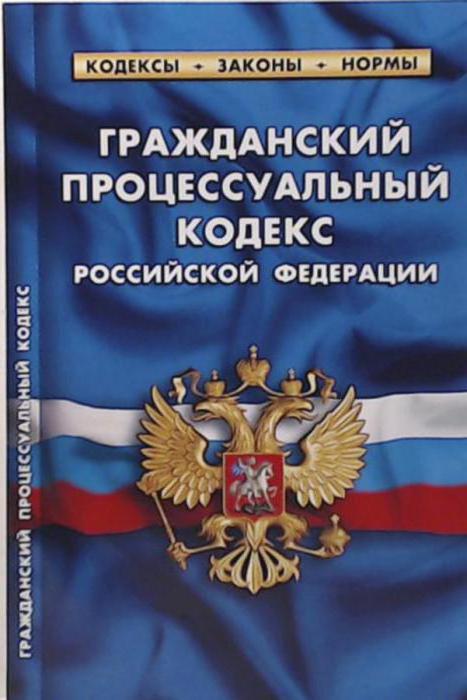What is simplified production in the civil process, on what principles is it based and what is its order? What are its differences from other forms of legal proceedings?
What it is
Simplified proceedings in a civil proceeding are a type of lawsuit that allows you to consider claims without calling the parties to the dispute, solely on the basis of the materials submitted by them. Due to this, the simplified form is also called writing.

It allows you to consider a limited list of cases, while the judge can go to the general procedure for consideration if there are grounds specified in the law.
Terminology Issues
The legislation does not contain the concept of simplified production in the civil process. It describes only the order of business, the list of disputes and the particulars of making a decision, as well as its appeal.
Apparently, the legislator specifically avoids introducing unnecessary terms into the code. This helps to avoid unnecessary confusion, especially given the presence of an orderly form of production. It is very similar to a simplified one, but it is not. The difference between them will be described below. Moreover, the introduction of a new term should facilitate the understanding and application of the law, but here such a goal would hardly be achievable.
A bit about principles
The primary principles are the fundamental ideas that are embodied in the text of laws and implemented in practice. Because of them, it becomes difficult to amend legislation. There are fears that short stories will not simplify life, but, on the contrary, will serve as fertile ground for abuse.

However, the practice of the ECHR shows: compliance with the principles of the civil process in simplified production is quite possible. Its decisions state that publicity is ensured by the participation of all persons with an interest in the process (plaintiff, defendant and third parties). If the establishment and study of facts is provided in their presence, then the resolution of legal issues is possible without their presence.
The principle of orality is not violated; if necessary, the court sets up a meeting in a general manner. The principle of immediacy is also not violated: the judge still examines the arguments and evidence provided by the participants in the process. If necessary, a transition to the general procedure of the proceedings is possible.
The place of the rules on simplified production in the Code of Civil Procedure
Simplified proceedings in the civil process in the civil procedure take place in the section on the lawsuit. The basis of the proceedings is the filing of a claim, in contrast to the order or special proceedings.

Consideration is carried out according to the same rules, with the exception of those prescribed by law.
The decision is canceled solely on appeal. The court order is canceled as soon as the debtor writes in time an application for its cancellation, no evidence or arguments are required.
In cases of special proceedings, it is enough to file a new application, a previously adopted judicial act does not entail a ban on filing an application on the same occasion and on the same grounds.
What cases are considered according to a simplified scheme
Simplified court proceedings in civil proceedings apply to two categories of cases:
- they are directly specified in the law;
- The parties and the judge agree with the simplified procedure, although the dispute does not fall under it from the very beginning.
The first category includes disputes:
- on recognition of ownership of a thing at a price of up to 100 thousand rubles;
- on recovery of monetary amounts in an amount not exceeding 100 thousand rubles;
- about monetary debt, which is indisputable, recognized by the defendant, but not executed by him.
The clause is contained that the dispute which is resolved by order is not subject to consideration.

Indisputability means sufficient documentary evidence of the debt and its recognition by the defendant.
A simplified procedure can be proposed by one of the parties or a judge, with the general consent of the application is satisfied. The issue of the transition to a simplified scheme is decided at the preparatory meeting.
What cases can not be considered in a simplified manner
Simplified proceedings do not apply to a whole list of cases, regardless of the will of the parties or the court:
- disputes are administrative in nature (should be resolved according to CAS);
- the case involves information constituting a state secret;
- in one way or another, the rights of children are affected;
- the application must be considered in a special order.
The judge, having found out during the proceedings that there is one of the above circumstances, is obliged to proceed to the general consideration of the dispute.

There may also be other circumstances that oblige to consider the claim, bypassing the simplified proceedings in the civil process.
Grounds for the transition to the general order of proceedings
Circumstances precluding the application of a simplified procedure that may come to light later:
- it turned out that the dispute is on the list indicated above;
- another person who has not previously participated in the case, asks for entry into the process by submitting a petition;
- there is a likelihood that a future decision will affect the interests of others who are not involved in the process;
- the defendant filed a counterclaim, which cannot be considered in a simplified manner;
- the need to carry out procedural actions that are possible only with a general order.
A simplified procedure is also impossible if:
- a survey of witnesses is required at the request of one of the parties;
- it is necessary to recover evidence that the party is not able to obtain independently;
- the court needs a direct examination and examination of evidence at their location;
- there was a need to appoint an examination;
- clarification of other circumstances is required, without which it is impossible to make an informed and lawful decision.
The above factors mean the abolition of simplified proceedings in the civil process for the bulk of cases.

What do judges do if they receive several demands that can be divided? Either all of them are considered together, or some of them are allocated in a separate production and resolved in a general manner. The law does not prohibit compound claims.
The decision on the appropriateness of joining or separating claims is made by the judge after they have been filed.
Simplified Procedure in Civil Procedure
A lawsuit is submitted to the court with copies of the attached documents on the number of participants in the process.
In the ruling on the opening of the case, the judge shall indicate the period of time during which the parties may forward additional evidence to the court. The defendant for the same time can send his opinion on the claim (objection to it or consent to it in full or in part).

The minimum period given to the parties is 15 days. It should be noted that it is counted from the day the ruling on the opening of the case is made, and not from the moment the documents are received.
Further, the judge, having received the documents, can give additional time to give new explanations and provide new evidence. A new term is given no earlier than 15 days after the end of the first term for the provision of objections and documents.
If the papers arrived late, the court accepts them provided that the delay was due to valid reasons.
Several features of summary proceedings
The two stages of the presentation of evidence and the expression of positions on them are explained by one practice: first, all materials relevant to the case are collected, and then the parties express their opinion about them.
The provision of a second term is called a kind of insurance for parties that have the opportunity to rethink the situation, and the court. In the usual process, the discussion of the argument, the evidence and its assessment are carried out once, and rarely return to this.
Another feature of simplified production in the civil process is the need to state all of your arguments on paper. Lawyers, preparing for the process, state only part of their arguments. Firstly, it’s easier to draw up papers, and secondly, I don’t want to fully disclose all my arguments to my opponent.
The decision is made in abbreviated form (introductory and operative parts and there is no motivation). A similar scheme is provided for justices of the peace who are required to draw up a full decision at the request of the parties.
The peculiarity of the appeal procedure is that it takes 15 days to appeal. The term is counted from the moment the decision is made. If an application was written to receive a full decision, then the deadline for an appeal is counted from the day of drawing up or, as the Code says, the decision is made in full.
Appeal stage
If the decision was made by the justice of the peace, the appeal is considered in the district court, if the district, that case is referred to a higher court, which ensures the consideration of appeals.
The rest of the procedure for simplified proceedings in the civil process at the appeal stage has serious differences.
The complaint is submitted to the court that passed the contested judicial act. The decision on the complaint is made by one judge. He initially considers documents without calling the participants, but if he considers it necessary, he has the right to call them and hold a meeting in a general manner.
New evidence or arguments shall be accepted if they were not previously accepted by the first instance without due justification.
If significant violations of substantive or procedural law are found or the case could not be considered in a simplified manner, the decision is canceled.
The judge on appeal does not have the right to make a new decision, he can only send the case for a new consideration in the general manner after the cancellation of a previously adopted judicial act.
Difficulties
- The draft law in the first version included a higher threshold for the price of claims - 500 thousand rubles. This amount would be more reasonable, given that the threshold of the amounts by order is 500 thousand rubles. After all, it is issued only on the basis of documents provided by the applicant, and the risk of error in issuing an order is higher than in simplified production.
- The cases between the simplified and the order orders are not clearly divided. And it would be logical to bring under the simplified procedure all cases of order proceedings.
- The recovery of funds from written transactions or applications for the seizure of property involves the initial filing of an application for a court order. Only after the cancellation of the order or refusal to issue it is allowed to file a lawsuit, which is considered in a simplified manner. On this basis, an attempt to expedite the consideration of cases of recovery of funds, where, in fact, there is no dispute, partially failed.
- The countdown of the procedural terms is related to the determination of the judge, and not with the receipt of documents by the participant in the process. Although the general rules indicate that the timely delivery of documents to the post office or courier is equivalent to being sent to court, the timing scheme in its practical application can still cause difficulties. As you know, the quality of the postal service leaves much to be desired. And the wording of the provisions of the law in this form will provoke a missed deadline for the submission of evidence and objections. The parties are forced to submit additional requests for extension of time, and the judge to decide them.
- Where the countdown of the procedural deadlines is associated with the actual receipt of documents by the parties, this problem is not so acute.
- The issue of supplementing or amending the claims and the grounds of action has not been resolved.
- The underdevelopment of the electronic document management system and conference calls plays its role. Their high level could solve the problem with red tape and the length of the dispute.
The listed problems of simplified production in the civil process are related both to the wording of the law and to purely technical circumstances, which were not fully taken into account.
The caution of the legislator is due to the fact that he is afraid to aggravate the existing problems, but, apparently, changes aimed at simplifying and speeding up the trial will be introduced further.
The ratio of order and simplified proceedings
Simplified and order production in the civil process has both similar features and differences.
- the procedures are characterized by the minimization of procedures (there is no preliminary meeting, no protocol is kept, the assessment of arguments and evidence is carried out exclusively by the judge, the participants in the process are not present in the courtroom);
- the order procedure applies to a limited list of disputes and, without canceling the order or refusing to issue it, do not file a claim;
- simplified production can be used in any business at any stage, you can also go to the general order of consideration;
- a court order serves as an executive document, a decision in a simplified manner requires a writ of execution.
The role of simplified production
At this stage, simplified forms of proceedings are beginning to return to the Russian civil process. In practice, they do not always fulfill their task of simplifying and expediting the settlement of disputes. The reasons for this are both the poor wording of the articles of the law and the technical ones (poor organization of the work of judicial institutions and the post office).
There is still an important nuance. The judiciary is not inclined to actively adopt and use innovations. It is easier for the servants of Themis to resolve the matter in the usual manner than to use a simplified procedure that raises many questions. The importance of simplified production in the civil process today is that it can help to build up practical experience that could be further used in the reform of the process.